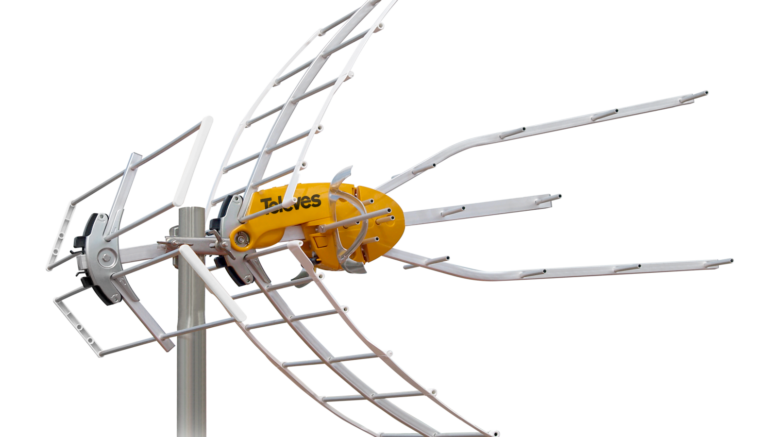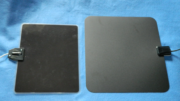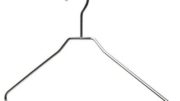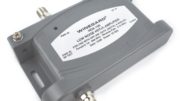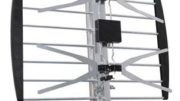When we promote our Televes, KING, or Antop antennas, there’s always one comment that sounds something like this:
I’ve been installing antennas for 50 years. This new antenna is just the same, only difference is a bunch of plastic on it. Save your money, keep your old aerial.
It’s hard for me to be angry at people like this because many of them have been our customers for a long time, and besides, they are right a lot of the time. But the fact is, this time they’re wrong. There is a difference, and I’m going to tell you what it is.

Let’s talk about how this antenna is built.
Here’s one way that I agree with the old installers. If you’re looking for an antenna that’s built-to-last, like the old antennas were, look no further. Except, wait…. I don’t agree with them here either. Televes and KING antennas are especially well built.
Most antennas made in the last century used extruded aluminum. The difference between the old ones and the ones today is that the aluminum was thicker. Televes antennas use laminated aluminum which is stronger, less likely to bend, and will hold up to life outside better than any other antenna you’ll find.
KING antennas are designed to put up with the impacts that come from highway travel. Even their home ones are designed to that standard. They’re tough, and they work great. They hold up to the elements in the way that bigger antennas can’t.
And what about the electronics? Were they really better then?
Old antenna installers will tell you that ‘an antenna is an antenna’ and you know what, they’re right. This is actually more true than ever because of the transition to digital TV. If you’re getting enough signal with a coat hanger, there’s no reason to go to any more trouble. However, if you do really need an outdoor antenna, there is a difference between the old ones and a new Televes, KING, or Antop antenna.
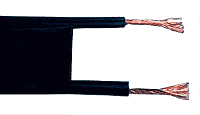
Older antennas were designed to use that flat 300-ohm cable. That cable was really cheap to make in those days, and didn’t require any electronics to make it work with an antenna. Today we use coaxial cable and it has better shielding and less loss. However, it does require electronics to make the transition between the impedance of the antenna (close to 300 ohms) and the cable (75 ohms.) You can get a $2 adapter to do the job, but Televes antennas use MMIC electronics and the highest quality manufacture, all encased in an interference-free and weather-resistant enclosure. That’s a whole lot better than they used to do it in the “Good old days.” KING and Antop antennas also use high-quality shielding and top-notch amplifiers that are designed to work with today’s TV frequencies, not those of the past.
Can’t an amplifier make up for some of the manufacturing problems with old antennas?
Now, it’s not likely that an older antenna installer would ask that question because he would know that amplifiers don’t always help. If you’re in a truly “fringe” situation, they can do wonders, but if you have enough signal and you’re not running really long cables, there’s no need for one.
Here, modern antennas have those old antennas beat too, in three ways.
- The built-in amplifier will pass signals even without power, so if you don’t really need it, just don’t plug it in. That’s different from other amplifiers on the market today.
- The amplifier itself runs super clean, cleaner than any other amplifier when you look at the entire frequency range. So you get more amplification and you don’t get more noise. Old amplifiers were notoriously noisy, and noise is the real enemy of digital TV.
- Even better, there’s an auto-gain-control circuit that automatically trims down the amplification if you don’t need it. This means nearer signals aren’t distorted.
I’d like to see any 50-year-old antenna beat that. As I said, those guys are right that you may not even need an amplifier, but it’s nice to know it’s an option, one that wasn’t really available 50 years ago.
See, I do agree with and respect our long-term friends who have more RF knowledge than I ever will. I agree that if you’re getting the reception you want with a 50-year-old antenna, or a paperclip, or a potato, you don’t need to buy something new. But if there are channels you’re not getting, if you’re seeing distortion or a choppy picture, chances are a new antenna from Televes is going to really make a difference. And that, dear readers, is something that hasn’t changed in the last 50 years. Televes has been making top-notch antennas since the 1950s and they still make them today.
Ready for a new antenna?
If you’re ready for a new antenna, you’ve come to the right place. Shop at Solid Signal for the best selection of TV antennas and accessories. Is it all too confusing? No problem! We have experts on call ready to help. Call us at 888-233-7563 and you’ll reach a pro in our Novi, Michigan corporate offices who is ready to help! We’re here during East Coast business hours. If it’s after hours, fill out the form below. We’ll get back to you, usually within one business day.

